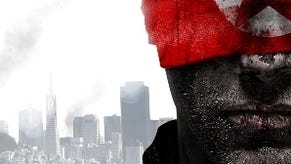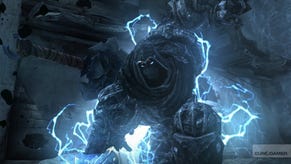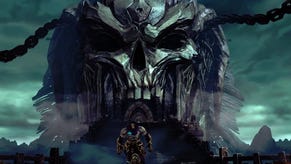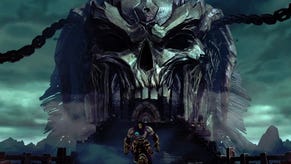Face-Off: Darksiders 2 on Wii U
Wii U fails to best the competition in another Digital Foundry multi-platform comparison.
In terms of platform parity, we came away reasonably satisfied with Vigil Games's work on the PS3 and Xbox 360 versions of Darksiders 2, although we felt that console gamers were let down by heavy tearing, while PC gamers had to suffer a lack of customisable graphics settings. The latter was a basic port, combining the best features of the 360 and PS3 versions with the ability to run at higher resolutions and frame-rates: by default the best experience, but a little disappointing in the DirectX 11 era.
With the new Wii U version, Vigil Games stated that Darksiders 2 would take full advantage of Nintendo's system from a gameplay point of view while matching the graphical accomplishments of the PS3 and 360 versions. Associate producer Jay Fitzloff told Eurogamer back in May that the Wii U has "plenty of horsepower... so we're not going to have to make any visual concessions at all". Instead much of the development time would be spent finding innovative ways to use the Wii U's GamePad to enhance the core experience.
So the question is whether Vigil Games has succeeded in achieving that goal of parity, or whether we're looking at another disappointing multi-platform Wii U release that sees brand new 2012 technology failing to match the graphical accomplishments of the vintage 2005/2006 current-gen stalwarts.
We kick off our analysis with a look at the Wii U and PS3 versions of the game in our head-to-head video below, complete with Xbox 360 and PC alternatives. There's also a meaty quad-format comparison gallery to check out too, which pits all three consoles up against the PC version of the game running at a matched 720p.
In terms of basic image quality, Darksiders 2 on Wii U renders in the same 1152x640 resolution as the 360 and PS3 versions, with a rather basic edge blur filter present in lieu of a more effective anti-aliasing solution. Some scenes appear sharper and more jagged than the other consoles, while others look to be a close match; the results are purely down to how well the algorithm catches and smooths over the offending edges.
As a plus point, we find that specular highlights appear slightly more prominent on the Wii U on some surfaces where the edge filter fails to blend away texture details. Beyond this there are only a few points of difference between Darksiders 2 on the Wii U and the other consoles; some of these are pretty significant, if only contained to specific areas.
"Wii U looks to offer the bulk of the existing Darksiders 2 experience, though some detail has been pared back while other elements are slightly more refined than the PS3 and Xbox 360 games."
Alternative comparisons:
Early reports cited missing trees and lighting in the Wii U version of Darksiders 2 and we find that to be the case in the final game too. The light-shafts present on the other formats are replaced by a more simple glow effect, water splash effects are less complex, while trees have been culled from some of the more wide open areas of the game. Lower-quality texture-work is also visible on the ground in these parts of the world, showing that Vigil Games has had to make a number of compromises to get the game up and running on the Wii U when dealing with expansive scenes. It's possible that some of these differences - particularly in terms of textures - are attributable to the streaming technology, with higher-quality artwork failing to load in.
That said, in more densely packed forest areas the greenery remains completely intact, while higher-resolution shadowmaps are also found. The cascade transition between these elements of the scene are also less aggressive than the other consoles, too - a somewhat strange situation, especially considering that these parts of the game are filled with bandwidth-heavy alpha textures, used for the foliage and trees. Perhaps the engine is bottlenecked on the Wii U when streaming large chunks of assets over areas with long draw distances - memory bandwidth or optical drive throughput could well be the issue here. Both Xbox 360 and PS3 are able to cache data onto their hard drives - remarkably, Wii U has no such mechanism in place with its in-built flash RAM.
Elsewhere, the overall look of the Nintendo version is pretty close to the other releases, with only a few changes to the graphical make-up of the game. On some surfaces higher-resolution textures are in place on the Wii U, although we find that the blended detail maps present on the PS3 and PC are missing - in this respect the Wii U release is a closer match for the 360 version. Curiously though, a few lower-resolution textures are found in select locations - once again we have to wonder whether the background streaming technology is the culprit here.
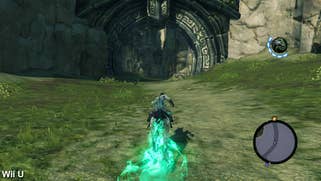
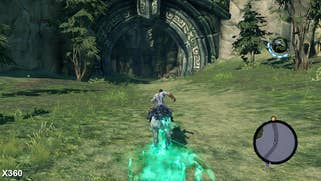

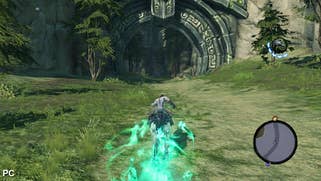
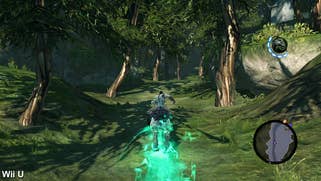
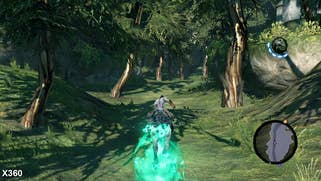

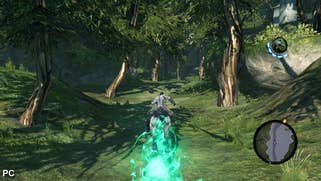
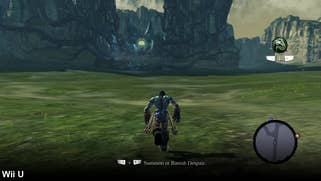


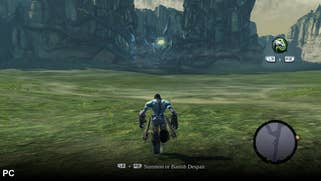
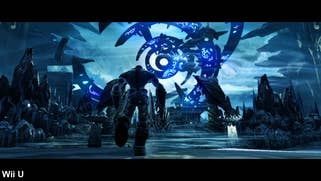

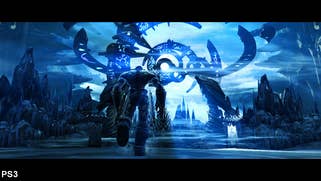
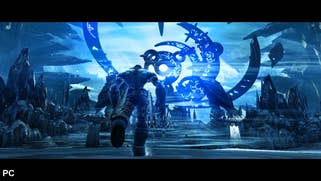
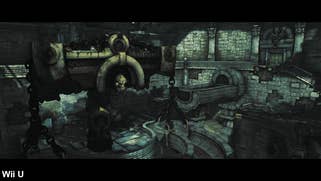
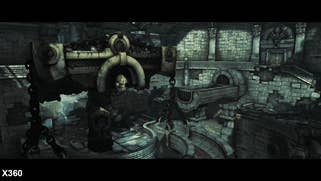


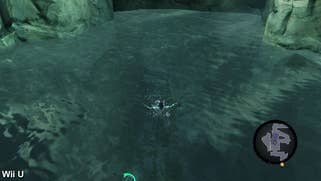
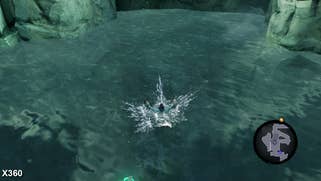
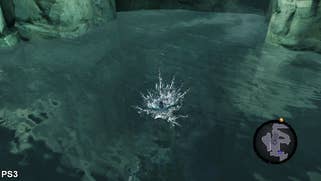

In truth, these changes only affect a small portion of the game's graphical make-up, and are largely contained to specific areas rather than applied evenly in every facet of the world. Many of the dungeons feature matching assets, with no visible compromise to the quality level of the visual effects work bar a few hardly noticeable detail maps absent from the mix. However, there's no doubt that the cuts made do create a slightly more barren-looking game as a result when traversing the affected areas.
As a footnote to the image quality analysis, it seems that the FMV sequences are identical on all three consoles. In terms of loading times - an aspect in which this game has come under a great deal of scrutiny - we see the Wii U version roughly on a par with the PS3 game. During the action, accessing times are around the six-second mark, while loading gameplay from the title screen comes in at 21 seconds - just two seconds faster than on the PS3 and on a par with the 360. However, when installed to the system's hard drive the 360 moves ahead with significantly faster loading times: two seconds during gameplay and just 14 from the main menu screen.
With rumoured Wii U optical drive specs suggesting a 2.5x speed increase over the PS3 Blu-ray drive, we're finding the loading time situation on the new console to be somewhat bizarre - perhaps seek times are not much improved over the PS3 drive.
Darksiders 2: performance analysis
Given that Vigil Games has made specific tweaks to the Wii U version of Darksiders 2, we were hoping for improved performance. The 360 and PS3 builds have their moments of solidity but both suffer from heavy bouts of tearing and regular frame-rate drops, which severely impact upon the experience as a whole. The PS3 comes across as the slightly better performer overall though, with a noticeable advantage in select scenes.
Kicking off with a batch of like-for-like clips from the in-engine cut-scenes, performance looks OK, falling short of the PS3 version in some areas but with slight improvements over the Xbox 360 game. However, frame-rate levels drop when the engine is faced with scenes that feature larger, more expansive scope and detail - particularly those featuring alpha, such as trees and smoke effects, where we find heavier bouts of tearing and sustained drops in smoothness. By and large, the results of the Wii U version lies somewhere in between the PS3 and 360, with some scenes favouring the older formats and others which seem to be better optimised for Wii U.
"Vigil Games reckons that Wii U holds its own up against the PS3 and Xbox 360, but we note elements of reduced performance in its Darksiders 2 work on the new Nintendo console."
The first few opening gameplay scenes in the Wii U version are also promising, with the game comfortably holding up against the 360 and PS3 releases, bar a little extra tearing in places, but this isn't an overly intrusive issue. Things remain running smoothly during the first boss encounter too, but, when the game properly opens up and presents us with more demanding scenes, this initially impressive match with the other consoles is disrupted by intrusive amounts of screen-tearing and constant frame-rate drops. In common with the Xbox 360 and PS3 versions, traversal on horseback around the game's expansive hub world causes real problems for the engine: tearing is rife on all platforms, and frame-rate drops can be very distracting, but we find this to be an even bigger problem on the Wii U.
Likewise, intensive combat scenes also cause problems for Nintendo's console, with performance dips up to 10FPS lower than the 360 and PS3 when the engine is taxed. At one point we see the Wii U version adopting a sustained 18-20FPS in parts of the last combat scene in our performance video. Wide open environments filled with trees, foliage and shadows (alpha-based effects and scenery) are also common causes of severe frame-rate drops. Sometimes we see the Wii U version matching the 360 game in a few scenarios, but more often than not it fails to keep up with both of its counterparts.
On the other hand, the Wii U game performs similarly to the other versions during the boss encounters, with the level of smoothness only faltering more heavily on occasion, usually when the renderer is faced with handling multiple adversaries in addition to a larger main foe. Overall though it's fairly obvious that Darksiders 2 on the Nintendo console isn't able to keep up with the others when heavily pushed and playability is compromised as a result.
"We were hoping that the more modern Wii U GPU would result in lower levels of screen-tear, but Darksiders 2 fails to impress at all in this particular regard."
The Wii U difference
Given that the tablet forms part of the main experience when engaging with the Wii U it's no surprise to find that Vigil games has made use of the touch-screen and gyroscopic controls for both gameplay and secondary functions - such as manipulating the map screen and managing your inventory. By default, mirroring to the tablet screen is only present during the cut-scenes, with the touch-screen display showing the inventory, map screen and other options via an otherwise permanently displayed menu. Here you can use the tablet to equip new items, set waypoints on the map and change various game options.
The process is fairly intuitive with quick taps of the touch-screen allowing for swifter navigation than the traditional joypad set-up. The touch menus are accessed without pausing the main game too, for on-the-fly sorting of equipment and weapons although we found it better (and safer) to pause the game first. Perhaps the only annoyance is that looking between the TV and GamePad touch-screen is somewhat distracting - we found that sometimes it would be better to have all the essential information available in the main TV screen, rather than having to pause and look away to access it.
The touch-screen finds its way into the core gameplay mechanics too, utilised to control depth when swimming under water. Unfortunately, while the controls are indeed responsive and work as they should, positioning the tablet when diving and rising up from the depths makes this feature rather annoying to use. By default most people hold the tablet at a partial upright angle when playing the game, much like a normal controller. However, this position actually makes Death dive straight down, rather than keeping him at a level position in the water. To swim upwards we had to tilt the GamePad so that the screen was facing us directly, with the top of the tablet in an upright position.
Other functions, such as the ability to waggle the tablet to mount your horse, come across as throwaway additions which don't enhance the overall experience in any way. It's quicker and easier to simply push a button instead.
"Wii U GamePad functions vary in their effectiveness, but the inclusion of the DLC packs as standard is a welcome addition to the game, adding around five hours of extra content."
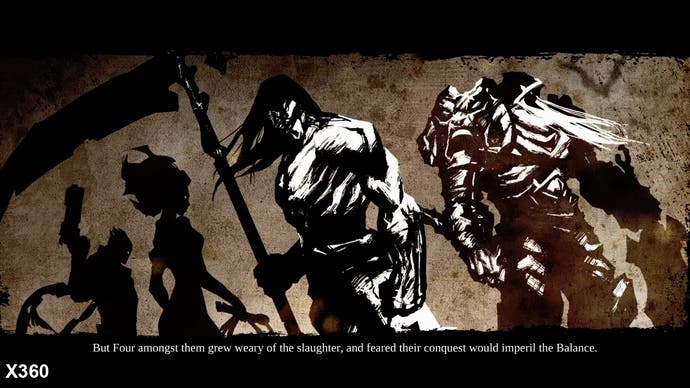
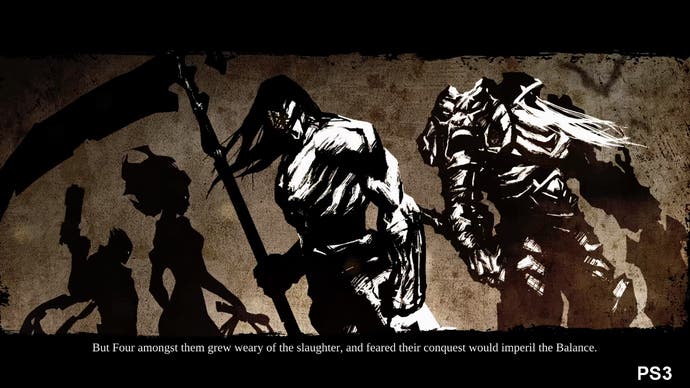

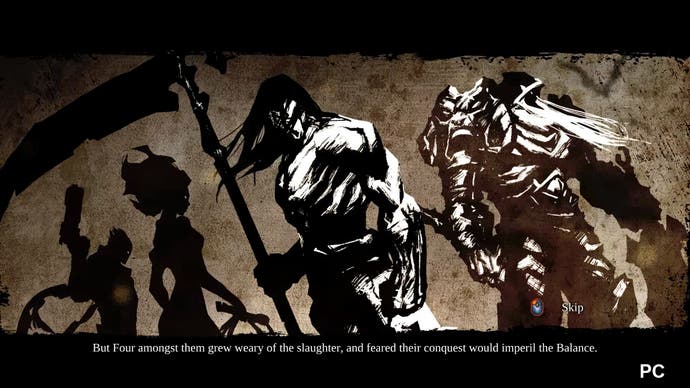
Aside from GamePad controls, the main draw with the Wii U edition comes from the inclusion of the Argus' Tomb and Death Rides Again expansion packs (offering around five hours of extra content) along with the legendary armour packs and a speed boost enhancement for the horse. Previously the only way to get these goodies was to purchase either the Special or Death Rides editions of the game - and then download the other via PSN or XBLA - along with buying the additional content packs online.
Darksiders 2 on Wii U: the Digital Foundry verdict
And so another Wii U launch title arrives that doesn't quite hold its own against the existing PS3 and 360 versions. After the fairly impressive work done on the Wii U port of Assassin's Creed 3, we can't help but feel a little disappointed with Vigil Games' efforts here. The removal of light shafts and environmental detail doesn't overly harm the game considering that the core artwork is a close match in other areas, but the sharp drops in performance are hard to ignore when the low frame-rate has a noticeable impact on the feel of the controls, making them heavier and less responsive.
In terms of the Wii U-specific features, the added touch-screen controls do prove useful, making navigation of the cumbersome menus a breeze compared to using the standard controller on the other platforms, although we could do without having certain moves being mapped to the GamePad's motion sensing functions. In addition, with the poorer performance and reduced visual quality, it also means that there's little reason to pick up the Wii U version at full price when the PS3 and 360 versions can be purchased new for as little as £20 online (though obviously the DLC packs are not included).
In the final analysis, the PS3 version remains the most impressive version of the game with higher-quality textures in places and superior performance, followed by the 360 release, while the Wii U sits in last place. While short on platform-specific enhancements, the PC version is the one to play if you have the necessary horsepower to sustain higher resolutions and frame-rates. Regardless of its issues, Darksiders 2 is still worth picking up on Wii U if you don't have access to any of the other platforms: the game itself is large and rewarding to play, and the narrative nicely complements the original Darksiders with a concurrently running story that expands on the events of the first game. As a final recommendation though, we'd perhaps hold fire on a Wii U purchase until it comes down in price.




